Do you live in an area that experiences mild snowfall? Have you grown fed up with using one set of tires for the summer and another for colder weather? All-weather tires can save you money while ensuring your vehicle’s stability throughout the year.
Often viewed as an alternative to all-season tires, all-weather tires perform better on snow and ice. That is because of two features (a much deeper tread pattern and a tread compound that stays pliable in freezing conditions) that all-season tires lack.
But not everything is great about all-weather tires. Take, for instance, tread life. It isn’t uncommon for all-weather tires to last 10,000 to 20,000 miles less long than similarly priced all-season tires. Need proof? Make sure to compare treadwear warranties.
This article will review the top 10 all-weather tires on the market. Additionally, we’ll highlight the key differences between all-weather and all-season tires. So that you can decide which of the two is a better fit for your driving needs and weather conditions.
#1. Michelin CrossClimate 2 – Best Overall
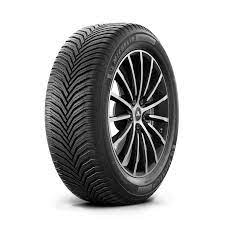
Price Check
Check the price of this tire at the following retailers:
Amazon TireRack DiscountTire PriorityTire SimpleTireDon't know the correct size tire to purchase? Start here!
The Michelin CrossClimate 2 is one of the major reasons why drivers who were previously content with all-season tires are now shifting to their all-weather counterparts.
In addition to being one of the best tires for driving in the rain, this model stays glued to the road in scorching summer weather. The reason? A Thermal Adaptive rubber compound that softens up the tire in winter without hurting its performance in the summer.
A combination of V-Ramp chamfers and aggressive biting edges delivers more good news. The former ensures quick water evacuation for a reduced risk of aquaplaning on wet roads. As for the biting edges, they enhance this tire’s traction in mild wintry conditions.
Speaking of wintry conditions, you can be sure this tire can easily tackle snow and ice. Don’t believe our word? The 3PMSF and M+S symbols on its tread mean you don’t have to. Both these emblems indicate that the CrossClimate 2 can keep your car stable in harsh weather.
As noted at the start of this guide, all-weather tires have a shorter tread life than their all-season rivals. Unfortunately, CrossClimate 2 isn’t any different. A 60,000-mile treadwear warranty indicates that it may last up to 2 years less longer than similarly-priced A/S tires.
Pros
- Comes with 3PMSF and M+S emblems
- Offers superb stability on snow-covered roads
- Exceptional performance on dry and wet roads
Cons
- Premium all-season rivals come with a longer treadwear warranty
#2. Bridgestone WeatherPeak – Runner Up
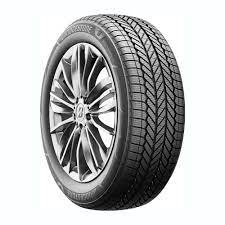
Price Check
Check the price of this tire at the following retailers:
Amazon TireRack DiscountTire PriorityTireDon't know the correct size tire to purchase? Start here!
The Bridgestone WeatherPeak is another exciting option if you want sure-footed performance on wet roads without sacrificing summer grip and traction.
An all-weather tire to the boot, this model offers better wet grip and traction than its fellow all-season tires from Bridgestone. The result? Short braking distances in the rain, reduced risk of aquaplaning, and better lateral grip for improved straight-line tracking.
Similar to our top pick, the WeatherPeak also carries the Three Peak Mountain Snowflake emblem. This emblem indicates that this tire exceeds industry standards for severe snow performance. In plain English, it means you can safely drive it on snow as well as ice.
A 70,000-mile treadwear warranty puts it above the CrossClimate 2, which, as noted above, comes with a 60,000-mileage guarantee. Compared with our top pick (which is 6.4% pricier than the WeatherPeak), the extra 10,000 miles of warranty indicate an excellent ROI.
Yet there are reasons why this tire isn’t at the top of our list. Independent tests confirm that CrossClimate 2 is superior in terms of wet and dry performance. Its handling is also more confident and wet/dry braking distances much shorter.
Pros
- Boasts a class-leading 70,000-mile treadwear warranty
- Offers sure-footed performance on snow and ice
- Costs less than rival all-weather tires
Cons
- Rival all-weather tires offer shorter dry/wet braking distances
#3. Nokian WR G4 – Runner Up
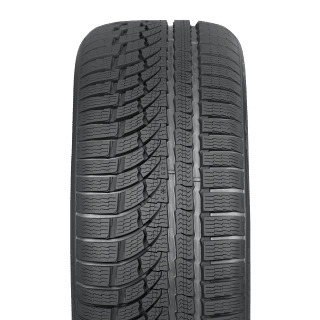
Price Check
Check the price of this tire at the following retailers:
Amazon DiscountTire PriorityTire SimpleTireDon't know the correct size tire to purchase? Start here!
Why do all-season tires struggle on snow and ice? Why are dedicated winter tires so noisy on dry pavement? Drivers grappled with these problems for decades. Yet it wasn’t until Nokian developed the WR G4, the world’s first all-weather tire, that a solution was provided.
Currently in its fourth generation, the W4 G4 combines superb all-season handling with a reliable winter grip. That means that it’s as reliable on dry roads as on wet and snow-covered pavement, something that most all-season tires promise, but only a very few can actually deliver.
Another thing that all-season tires are wary of doing is being reliable in rough weather. Fortunately, having driven this tire on my Toyota 86, I can vouch for its stability in 2-3 inches of snow. All the worries I had when ‘downgrading’ from winter tires proved to be ill-founded.
Similar good things can be said about its performance in the rain. I have driven this tire when there was standing water all around but never once did the W4 GR struggle. There were no signs of hydroplaning or slippage, and the traction and grip were also on-point.
Yet there’s one thing I didn’t like about this tire. Given the enthusiast that I’m, the lack of steering feel disappointed me. So it would be unwise to count on this tire to offer much road feedback.
Pros
- Comes with a 60,000-mile treadwear warranty
- Performs reliably on snow- and ice-covered roads
- Short stopping distances on dry and wet pavement
Cons
- Isn’t the most responsive
#4. Goodyear Assurance WeatherReady
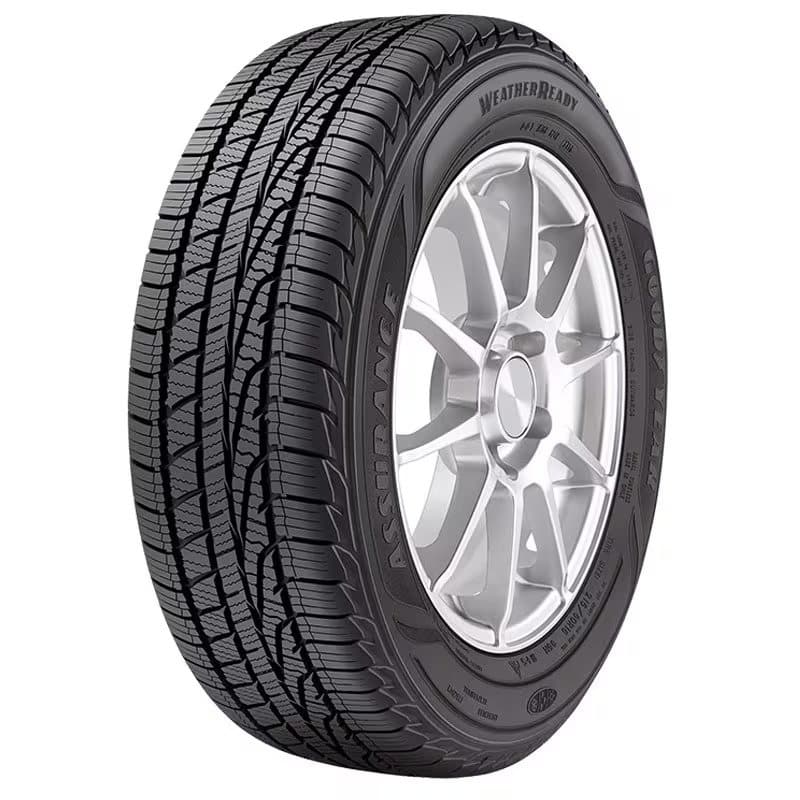
Price Check
Check the price of this tire at the following retailers:
Amazon TireRack DiscountTire PriorityTire SimpleTireDon't know the correct size tire to purchase? Start here!
The Goodyear Assurance WeatherReady is probably the most famous all-weather tire on the market.
Mainly because it offers amazing dry and wet traction. An all-season tread compound enables it to stay useful-year round. It also helps it offer the kind of road manners that could put everyone in the cabin, bar the driver to sleep, unless you’re driving on bad roads.
Another reason why it’s so famous is that it offers an amazing steering response. So you would remain in full control while executing quick lane changes. It also delivers pretty good feedback to the steering, helping you remain abreast of what’s going on down there.
Yet another factor behind this tire’s popularity is that it stays handy in light snow. Braking distances are impressively short, and the cornering grip good enough to let you execute slow turns without slippage. That said, it fails to offer an inspiring grip on ice.
Goodyear has also equipped this model with its proprietary ‘Evolving Traction Grooves’, though the grooves do not evolve as much as they bare their teeth as the tread wears out. They are the reason why this tire’s excellent traction stays intact throughout its use.
Pros
- Delivers great steering feedback for a tire in this class
- Offers amazing traction on snow
- Very good handling on wet roads
Cons
- Ice traction could be better
#5. Firestone WeatherGrip
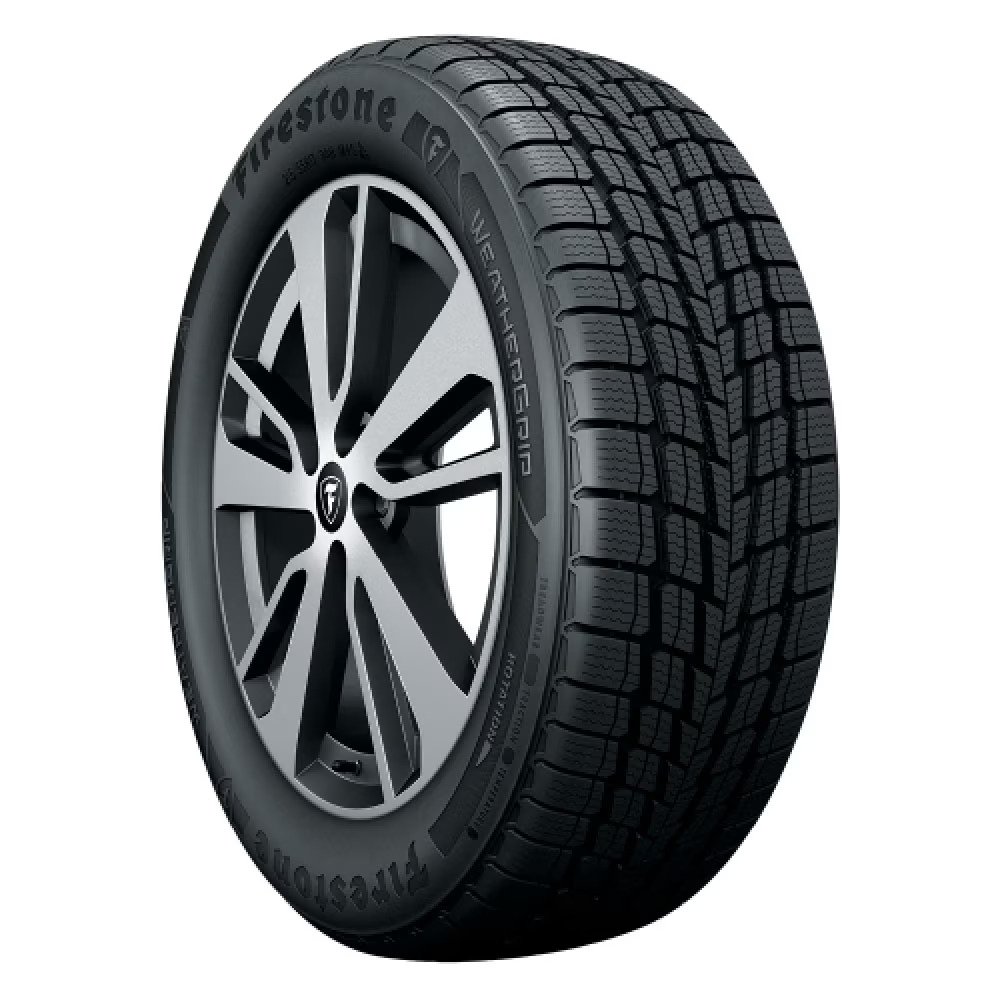
Price Check
Check the price of this tire at the following retailers:
Amazon TireRack DiscountTire PriorityTire SimpleTireDon't know the correct size tire to purchase? Start here!
The Firestone WeatherGrip is a must-have if you’re in the market for a solid mid-ranger.
Like every other tire in this review, even those that cost twice as much, the WeatherGrip offers complete control regardless of whether the roads are dry, wet, or buried under snow. An all-season compound with various aggressive sipes helps it with that.
On dry roads, this model offers amazing longitudinal traction, meaning your vehicle’s engine won’t have to burn much gas to accelerate from a stop. You’ll also be impressed with its cornering grip, which is good enough to let you safely pull off high-speed turns.
What we said above isn’t to say that this tire is a slouch on wet roads. Thanks to the full-depth grooves and open shoulder slots in its tread, it won’t let your car lose stability while driving through deep puddles of rain, a good indicator of any tire’s wet performance.
All of the above is good and all that, but what about its snow performance? Fortunately, that is another box this tire ticks. The longitudinal traction is good enough to let you brake and accelerate without too much fuss, and it turns well into a corner as well.
However, there is one area where this model disappoints. Drivers who have put it to the test on the highway complain that its noise-dissipation characteristics aren’t quite good. That means that you may hear the WeatherGrip on the highway.
Pros
- Short braking distances on snow
- Sure-footed grip and traction on ice
- Comes with a 65,000-mile treadwear warranty
Cons
- Noisier than premium all-weather tires
#6. Michelin Agilis CrossClimate
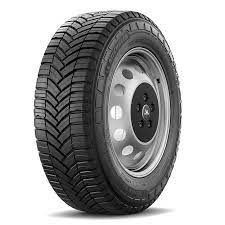
Price Check
Check the price of this tire at the following retailers:
Amazon TireRack DiscountTire PriorityTire SimpleTireDon't know the correct size tire to purchase? Start here!
The Michelin Agilis CrossClimate is one of the few all-weather tires designed to be put on commercial vehicles. Think of pickup trucks, travel trailers, semi-trucks and coaches. As such, it has the features needed to come good for its target market.
The first is CurbGuard, a sidewall protector shielding the wheels from curb damage. Next comes the nylon ply, which has reinforced this tire and increased its load-carrying capacity. You can thus count on this tire to easily carry heavy loads.
Just because it’s designed to withstand heavy use doesn’t mean that other qualities are ignored. Take ride comfort. The Agilis CrossClimate puts up decent road manners for a tire in this category, with its noise and vibration levels the lowest among its peers.
For wet and snow performance, Michelin equipped this tire with grooves and SipeLock Technology. While the former helps with water evacuation, the latter, by locking the sipes as the weather takes a turn for the worse, boosts traction in harsh weather.
Bear in mind, though, that this model doesn’t come with any treadwear warranty.
Pros
- Behaves excellently on dry tarmac
- Can withstand lots of daily abuse
- Performs decently in light snow
Cons
- Doesn’t come with a treadwear warranty
#7. Vredestein Quatrac 5
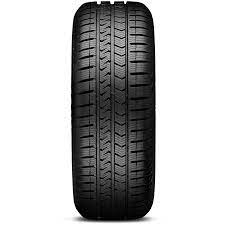
Don't know the correct size tire to purchase? Start here!
At the Quatrac 5’s unveiling ceremony, Vredestein claimed that it is the ‘best tire for all seasons’ without compromising performance or comfort. That’s quite a bold claim to make, but fortunately, this tire has what it takes to deliver on it.
Vredestein has equipped this model with a high-silica tread compound. The compound has been molded into an asymmetric tread pattern, which, in turn, contains three circumferential grooves (water evacuating channels) and wide shoulder blocks.
The result? An incredibly stable tire with superb handling on dry surfaces. As for wet performance, even though this tire has one fewer groove than rivals, aquaplaning still won’t be a problem. That’s because the grooves work with sipes to evacuate water.
In terms of handling, the shoulder blocks go a long way. Not only do they make this model stable at high speeds. But by transmitting loads of feedback to the wheel, they boost its steering responsiveness.
This tire also works well on light snow, as the 3PMSF symbol on its tread makes clear. Plus, as the sight of sipes on its tread indicates, it should offer more than enough grip on slippery surfaces. As long as you can ignore the pitiful 45,000-mile warranty, this model has very few deal breakers.
Pros
- Superb dry and wet performance
- Excellent price per performance ratio
- Surprisingly good in light snow
Cons
- Premium competitors come with a longer treadwear warranty
#8. Toyo Celsius
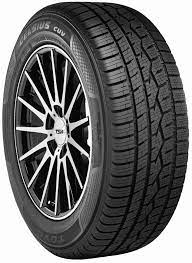
Price Check
Check the price of this tire at the following retailers:
Amazon TireRack DiscountTire PriorityTire SimpleTireDon't know the correct size tire to purchase? Start here!
Alongside the Firestone WeatherGrip, the Toyo Celsius is one of the best tires for drivers who’re searching for pocket-friendly yet high-quality tires.
One of the best things about its tire (in case its name didn’t give you a clue) is that you won’t have to replace it with a set of winter tires in inclement weather. The 3PMSF symbol on its tread makes clear that it’s the tire for harsh weather conditions.
In case you’re wondering, the Celsius doesn’t just survive in the freezing weather. It also offers decent handling on dry roads. Additionally, thanks to the deep channels in its tread, this model resists aquaplaning for reliable performance on wet roads.
You will also love the IntelliSipe Technology with which Michelin has equipped this tire. After all, the technology has helped lower this model’s rolling resistance. That, in turn, means high fuel economy, making it a cost-efficient tire in the long run.
Pros
- Weighs light on the pocket
- Offers amazing snow and ice traction
- Is incredibly fuel efficient
Cons
- Ride could be quieter
All-Season Vs All-Weather Tires
Although often grouped together, there are several differences between all-season and all-weather tires. Being aware of these dissimilarities will help you pick the model that best fits your requirements:
1) Design
All-season tires typically have a shallower tread pattern than their all-weather counterparts. This is done to help them perform well across a variety of conditions. In contrast, the relatively deeper tread pattern (and additional sipes) enables all-weather tires to offer better traction in snow and ice.
2) Tread Compound
Tread compound is a mixture of three components (rubber, fillers, additives) that make up a tire’s outer layer. It’s responsible for offering traction, resisting wear, and dissipating heat. All-weather tires have a relatively softer tread compound for improved traction in light wintry conditions.
3) Lifespan
Due to having a softer tread compound, all-weather tires wear faster than all-season tires. This explains why the best all-season tires are backed to last up to 90,000 miles, whereas all-weather tires rarely if ever come with a treadwear guarantee exceeding 70,000 miles.
4) Target Audience
All-weather tires are a better fit if your area receives a fair bit of snow during winter. However, if you live in a region with moderate weather year-round, all-season tires may be a better bet.
Conclusion
If the area where you live and/or drive experiences more than its fair share of snowfall and you don’t want to keep a separate set of tires for the winter months, all-weather tires are a no-brainer.




2 Comments
Thanks, very thorough and enlightening discussions of each tire’s characteristics and strong and weak points. One question I have is what is the relationship between Toyo and Michelin?
At this point in time, there’s no relationship between them, both companies are separate.